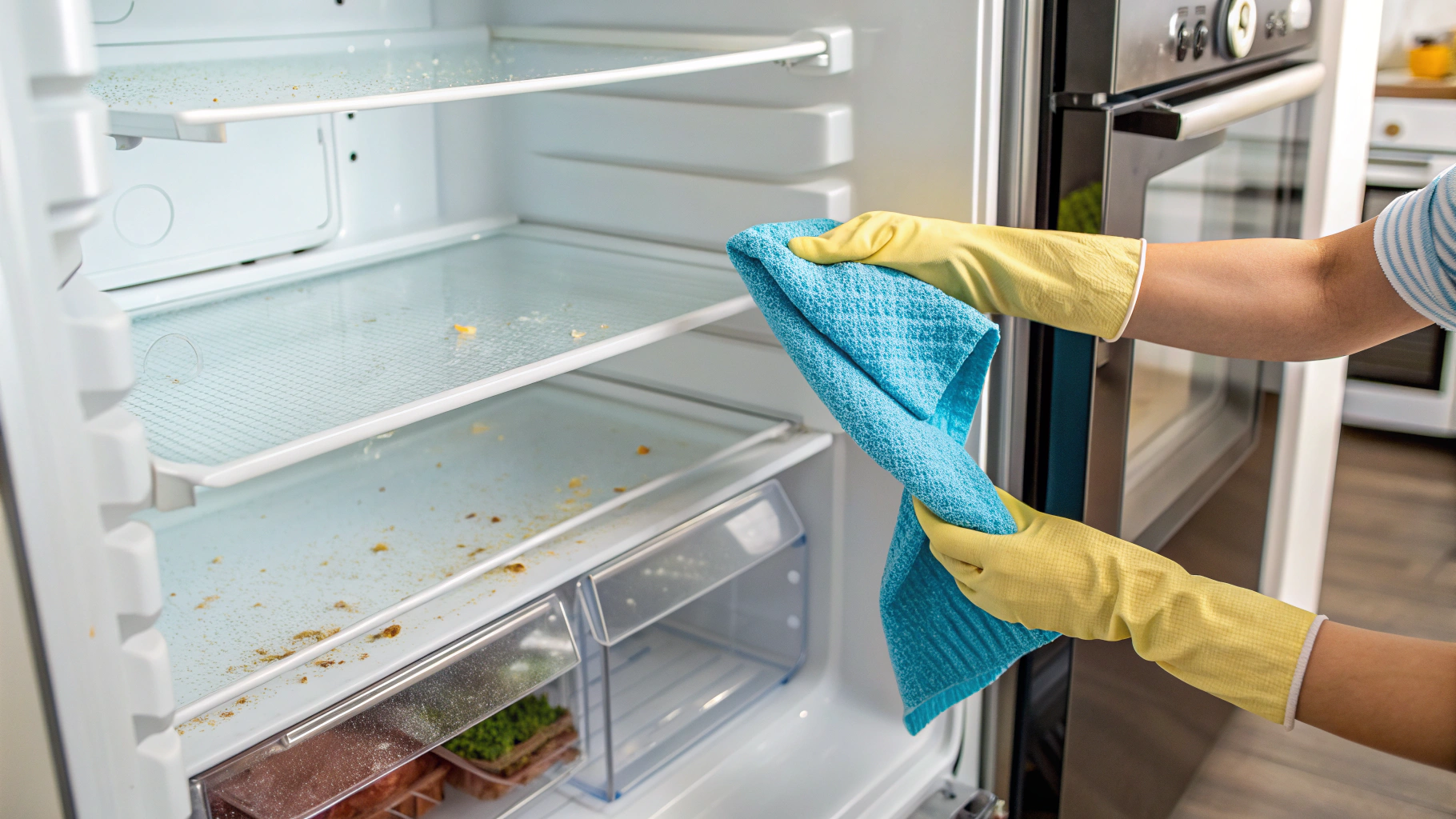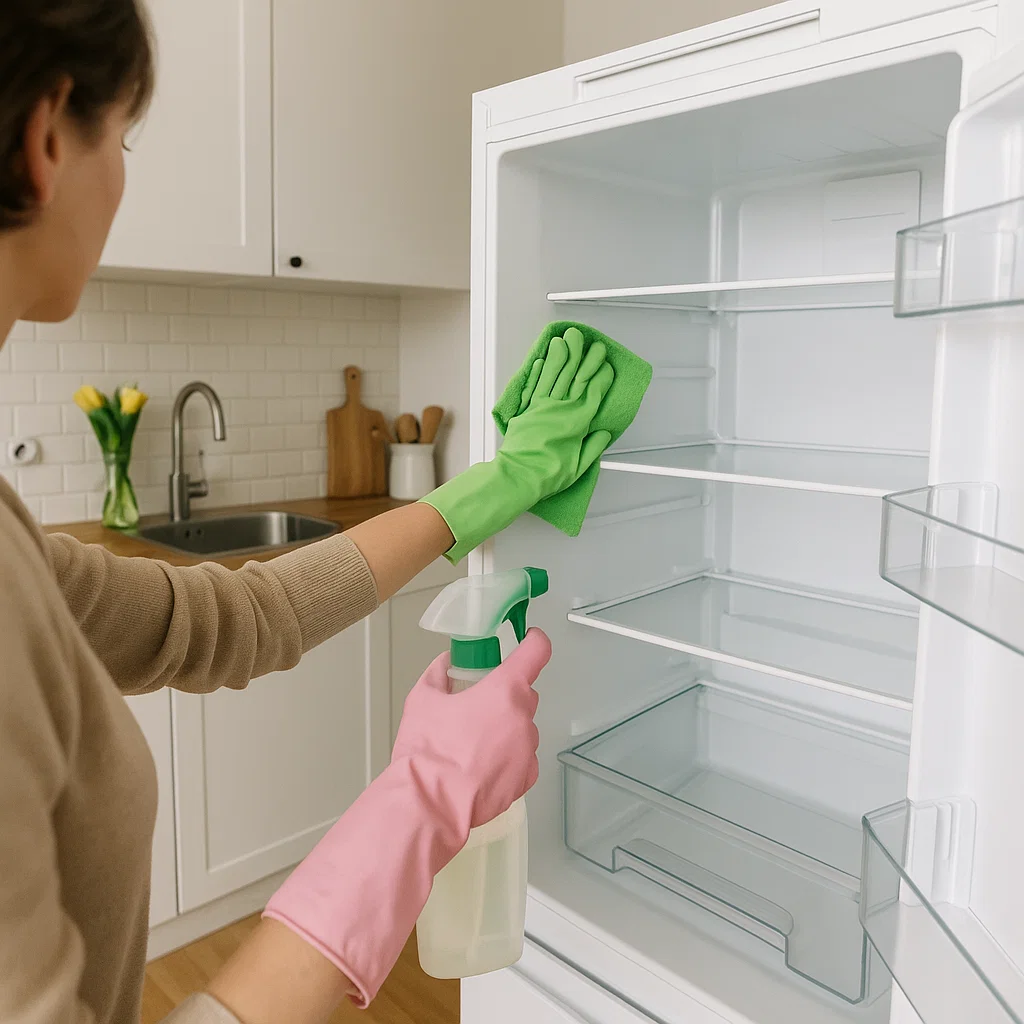Your refrigerator and freezer keep food fresh, reduce waste, and save you money — but they’re often the most neglected appliances in the home. A dirty fridge not only causes bad odors but also impacts food quality and safety. In this quick guide, we share step-by-step cleaning tips, organization hacks, and pro tricks to keep your fridge and freezer fresh.

While most people clean their kitchen counters and floors on a weekly basis, many leave the fridge for “later.”
Spilled food, sticky jars, and forgotten leftovers build up in the fridge over time, along with bacteria, mold, and strong odors.
Fridge and freezer cleaning benefits:
👉 According to the Government of Canada food safety guidelines, keeping your refrigerator below 4°C (40°F) and cleaning it regularly reduces the risk of harmful bacteria and foodborne illness.
At Lumina Life, we strongly believe that having a clean and tidy home can help people lead a more healthy and happy lifestyle. Read more about our story on our About Us page.
Cleaning a fridge and freezer is not too complicated, but some preparation helps.
Materials needed:
👉 Pro tip: Plan your fridge cleaning before your next grocery shopping trip to avoid a full fridge.
Emptying the fridge and freezer gives you a clear picture of what you need to clean.
Sorting the food helps to reduce waste and organize better:
Hack: Store leftovers in a basket or bowl labeled “Eat Me First.”
Shelves, bins, and drawers are the places where most spills and stains accumulate.
Clean the inside with a mild cleaning solution.
Extra tip for odors: Cut a lemon in half and rub it on the interior walls of the fridge and freezer for a fresh citrus scent.
Rubber door seals keep the cold in and catch crumbs and mold.
For older, non frost-free models:
👉 Too much effort? Book a professional one-time fridge and freezer cleaning.

Smart storage = less waste and less time hunting for leftovers.
Storage hacks:
✔ Spring – Deep clean before summer.
✔ Summer – Watch for mold and condensation.
✔ Fall – Declutter before holiday shopping.
✔ Winter – Defrost freezer if needed.
How often should I clean my refrigerator and freezer?
Quick wipe weekly, deep cleaning every 3–4 months.
How to quickly defrost a freezer?
Unplug, place bowls with hot water inside, keep door closed until ice melts.
Can I use bleach in my fridge?
Not recommended — it leaves strong odors. Use natural cleaners instead.
How to avoid freezer burn?
Use airtight bags, remove excess air, and label food with dates.
Why should I consider professional refrigerator and freezer cleaning services?
Because it saves you time and ensures a deeper, safer clean.
👉 Learn more about our cleaning services or request your free quote today.
Cleaning your fridge and freezer has many benefits: better hygiene, energy efficiency, and less food waste.
If you’d rather relax than scrub, let Lumina Life help. Whether it’s a one-time deep cleaning or recurring service, we make sure your home sparkles.
✨ Visit our homepage for more info or get your free quote today.

Complete 2026 guide to Calgary cleaning services, including updated house cleaning costs, deep cleaning rates, and what homeowners can expect from professional cleaners in Calgary this year.
Read more
A truly clean home is essential for health, comfort, and protecting your investment in furniture and flooring. While vacuuming and dusting were once enough, today’s methods deliver deeper, faster, and greener results. At Lumina Life , we use advanced cleaning techniques to remove dirt, bacteria, and allergens so every surface in your home shines. Discover how vacuum cleaning, steam cleaning, and eco-friendly methods can be the best choice for each surface.
Read more
Most people think of cleaning as just a chore to keep the house looking nice. But in reality, it affects health, finances, lifestyle, and even emotional well-being. With today’s busy schedules, Canadian families often struggle to keep up. That’s where professional cleaning makes a difference — turning a home from stressful to healthy and welcoming. Companies like Lumina Life focus on creating clean, safe, and beautiful spaces that benefit the whole family, not just the home’s appearance. Here are some surprising benefits of professional cleaning every homeowner should know.
Read more